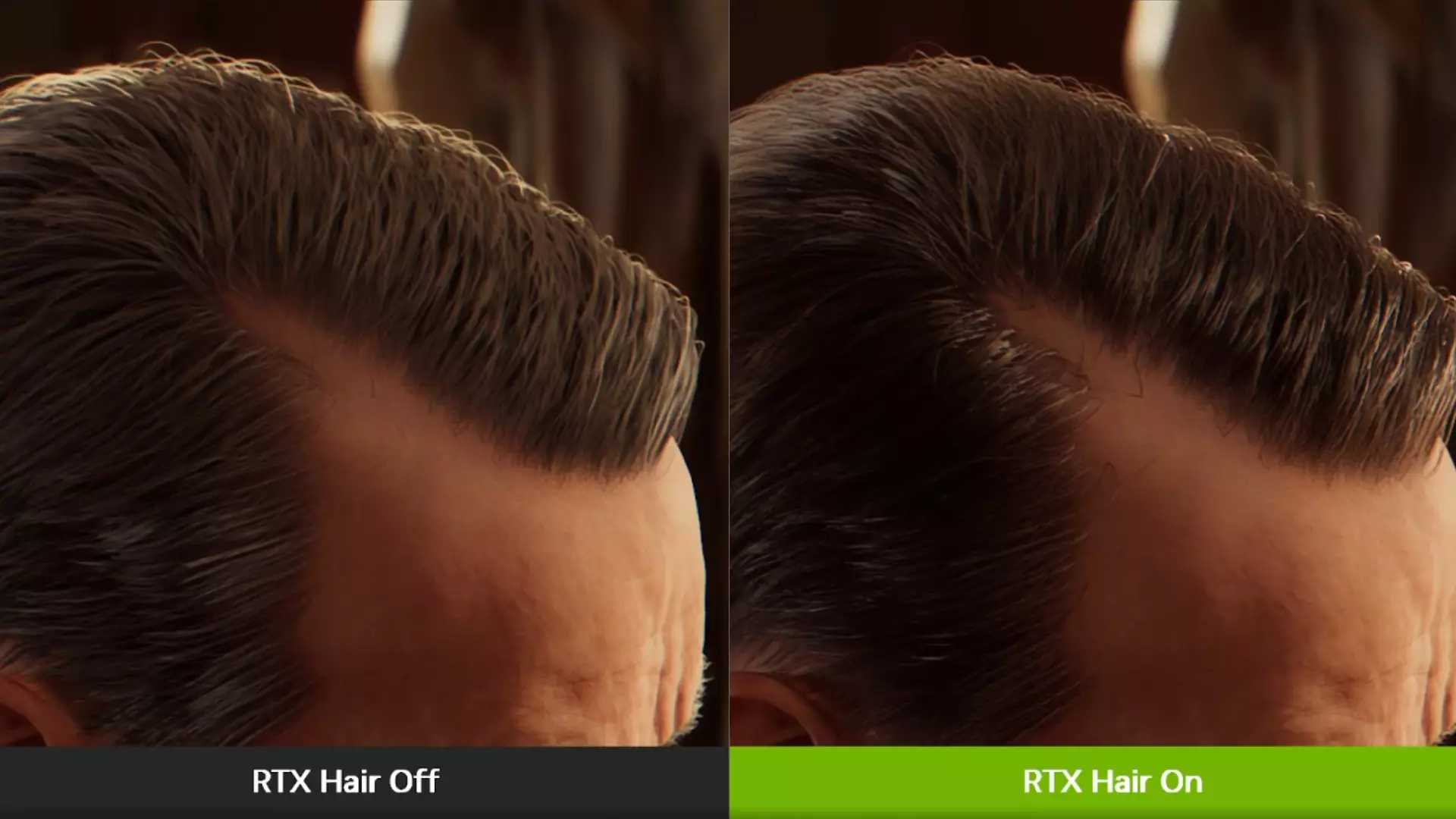The pursuit of photorealism in video games has always been a balancing act between visual fidelity and performance. Among the most challenging elements to replicate convincingly is human hair. Traditionally, game developers relied on simplified models—styling hair as a collection of polygonal strands or layers of textures—results that often appeared stiff or unrealistic. Nvidia’s latest innovation, RTX Hair, aims to elevate this visual element to new heights, providing the possibility of truly stunning and natural-looking hair in interactive environments. This technology does not merely enhance aesthetic appeal but addresses long-standing technical hurdles associated with rendering complex hair strands without sacrificing performance.
What sets RTX Hair apart from previous attempts is its innovative approach to computational efficiency. Unlike earlier methods that heavily relied on tessellation, which could be taxing on hardware, Nvidia’s implementation utilizes Linear Swept Spheres (LSS)—a revolutionary primitive designed to better mimic the shape and movement of individual hair strands. This technique allows for more accurate modeling, including realistic lighting and shadow effects, creating a dynamic visual fidelity that is only comparable to high-end CGI animations. For gamers and developers alike, this promises a future where hair does not simply look good in still images but responds dynamically to environmental factors, light sources, and character movements, delivering an immersive experience.
The Technical Breakthrough: From Triangles to Swept Spheres
The core of Nvidia’s innovation lies in how it renders each hair strand. Historically, rendering hair required a web of interconnected triangles—each representing a segment of hair—which quickly became a computational nightmare. When numerous strands were present, performance dipped sharply, leading to the infamous “hairy” workaround: turning off hair rendering altogether. Nvidia’s RTX Hair tackles this problem head-on by replacing traditional geometry with LSS primitives, which efficiently approximate the shape and movement of real hair. This shift is akin to transforming a dense forest of polygons into a more manageable and realistic stylized representation.
This approach also enhances the shading and lighting calculations, enabling each strand to react differently to environmental light, creating subtle highlights and shadows that mimic natural hair. As a result, the rendered hair appears less like plastic strands and more like genuine human hair—soft, shiny, and full of life. It’s a leap forward that could change the way character customization and realism are approached in the gaming industry. With less VRAM consumption and better computational efficiency, RTX Hair could become a game-changer for developers striving for both beauty and performance.
Historical Context and the Path Forward
Looking back, Nvidia’s previous attempts at realistic hair—most notably HairWorks—demonstrated the ambivalent relationship between visual ambition and performance constraints. HairWorks brought stunning visuals to titles like The Witcher 3, but it was notorious for slowing down frame rates due to its reliance on tessellation-heavy geometry. Encouraging developers to turn it off if they wanted smooth gameplay, it was a cautionary tale about the limits of older technologies. RTX Hair seems poised to sidestep these issues altogether.
By integrating LSS-based rendering, Nvidia offers a more resource-conscious alternative that does not compromise on visual quality. Nonetheless, the success of this technology depends heavily on its adoption and implementation by game developers. Will RTX Hair become the standard for realistic hair in AAA titles, or will it face the same fate as prior innovations, relegated to technical showcases? Given Nvidia’s investor and developer enthusiasm, the signs point toward a promising future.
Unlike HairWorks, which struggled with heavy computational overhead, RTX Hair aims to set a new standard where visual excellence coincides with maintainable performance. If this balance is achieved, it could pave the way for even more ambitious rendering of human features, from detailed skin textures to nuanced facial expressions. Future titles might offer not just lifelike visuals but authentic interactions, where every strand of hair responds naturally, adding depth and realism that immerses players more deeply than ever before.

